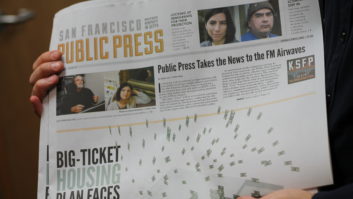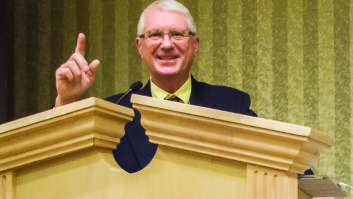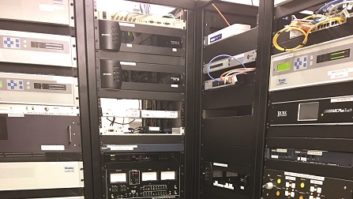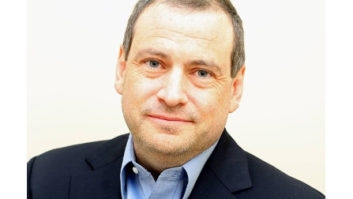Tom Osenkowsky brings a wonderful clarity to broadcast issues in his commentary (“Terrestrial Broadcasting: The Next Generation,” Oct. 21, 2009), with suggestions for simplifying local station operational procedures, including elimination of the main studio, public file and chief operator rules.
Times have changed since the introduction of those requirements. Rules, policies, ownership structures and the public’s concept of “community needs” have evolved.
Community need is the essential point here. Tom, I love you like a brother and respect your years of local radio commitment; but as long as the fundamental policy of the Federal Communications Commission is to allot and license station facilities to communities, we require a system of input that addresses the satisfaction of those needs.
The archaic written public file was a laborious solution. With the “Internet village” we can now save some trees. I suggest that the FCC give licensees no option. Require that stations provide consumers a single path of access to their public files via the Internet; and eliminate the requirement of a local phone number, which no one answers in real time anyway.
The tyranny of cash
Tom is correct that there is no walk-in trade in broadcasting; people in 2010 make contact by e-mail and texting. We do not need a studio and office with a big oak door on Main Street any more.
A simple link at the FCC Web site, via the station’s facility number or community of license, should take any interested party directly to the station’s public file. The visitor can post comments, inquiries and thoughts about issues; the station can publish its responses and actions; the commission can observe the station’s conduct.
Managers, does it really take a lot of time to evaluate what you are doing for your community of license? Fifteen minutes a quarter? How much of your airtime does it take to meet those needs? Less than 1 percent? With so much in the balance, why do so many of us feel this minimal effort is a drag on station resources?
Be careful what you wish for. At present, radio’s raison d’être is community service; your station’s grant is based on a commitment to provide an optimal public service to a defined section of America. Eliminate that commitment and you also lose the reasonable anticipation that your license will be renewed.
The tyranny of the cash register will be your new master because the FCC’s taxi meter will be running. Let’s pull some not-so-fantastical numbers from the mindset of the congressional cosmos. You want to serve New York City? Pony up $2 million a year. Danbury, Conn.? A bargain for such a fine city at $100,000. Forget 20 years of excellent programming and service. Someone is willing to pay more, so the frequency is theirs.
Unfunded mandates
As to Tom’s pragmatic suggestions such as eliminating the chief operator: I agree that much can be done to improve economies and effectiveness; but the pendulum swings both ways. If chaos and shabby station performance result, we can anticipate unfunded mandates — maybe a return to annual proofs of performance, mandatory quarterly checks or expensive “third-party verifications.”
About EAS: If the communications system of America is a house, broadcasting provides the footings. Over a century, whenever our energy-based society has broken down or been threatened by hurricane, ice storm, tsunami, civil disturbance or wildfire, broadcasting has been the last strongest link that holds us together. It’s the only one that can reach us reliably, wherever we are, whether we are trapped or have been forced on the move.
EAS is not only a warning system but an information distribution system. When consumers are without power or have lost other connections to public communication systems, broadcasters remain on the air thanks to our RF connection structure and flexible reconfiguration abilities.
Pending changes in EAS standards offer us the chance to remove a point of failure. EAS equipment should be maintained not at the station but at a central depot. Every station should have a federally supplied CAP box online as well as one in a sealed shipping case, programmed and ready to go immediately if the one online fails. The failed unit should be returned via overnight shipment and a replacement for the spare shipped as soon as it is programmed and tested.
EAS is so important that I think stations that participate voluntarily at the state and local level should pay no spectrum fees. Perfect performance means no fees. Screw up from lack of attention and you pay the fees (and face a license renewal issue).
Under these terms we’d have a near-perfect EAS system. More important, your community and the nation would have the viable, reliable warning and information distribution system it needs.
Tom Osenkowsky has gone to the core of the matter with excellent points regarding station operations in a difficult economic time. Let’s start the dialog and make meaningful and positive changes without bringing down the roof on ourselves.
The author is a frequent contributor to Radio World. Opinions are his own.











